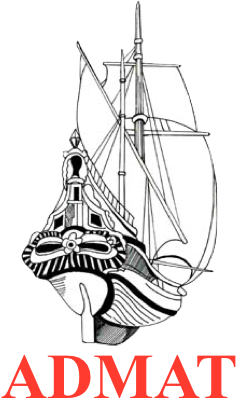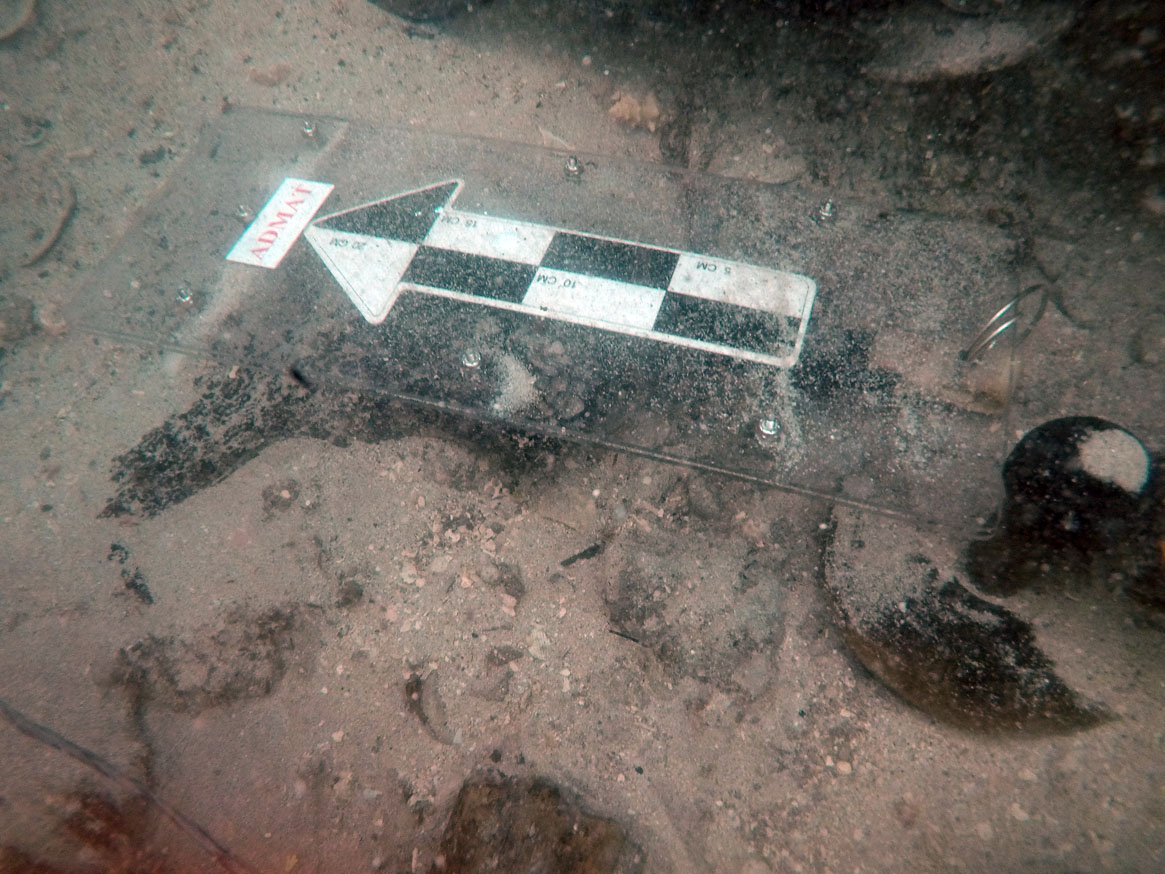The moment I had been dreading had finally come. It was the last work day of the first two weeks and the last time I would dive on “Le Dragon”. It seems strange to say, but when our time was finally up and I had hugged the last cannon goodbye, I could feel a sort of choke in my throat in amongst the rising bubbles. By this time, “Le Dragon” was much more than a work site to me… she was home.
The day passed uneventfully for the most part. We continued work on the dredge and hand fanning the main grid, while others used the metal detectors and gradiometer to probe the areas around the 100 and 200 meter reference marks we had made. Unfortunately, no hits were made.
Hand fanning on the bow section which was covered with sand
The other objective was measuring the exposed port and starboard sides of the ship. Thankfully after tidying up the protruding wood planks, we could see a beautiful row of futtocks and floor beams in good condition. However, as the day went on... the visibility got worse and worse until you literally had to sketch the planks with your face pressed against them. This was another case of taking something that seems so easy on land, such as measuring, and finding there are plenty of different challenges when doing it underwater.
Raimund Krob measuring cannon No:2 on Le Dragon site
And just like that, Phase #1 was complete! After finishing on the wreck, we headed home and celebrated the night at a local bar. For most of the ADMAT team, this was the beginning of changeover, a time where the now battle-hardened recruits would shake hands with the new volunteers. Nevertheless, it was still a bittersweet time as parting was like leaving family.
Connor leaving the wreck of Le Dragon, surfacing after his last dive for 2018
The collision of archaeology, scuba diving, and the colorful Dominican culture all in one place is certainly an experience. And yet as crazy as it is, there’s nothing quite like the adventure and fun that comes with it! When people ask me, “what was your favorite part?” I can only look at them and reply “All of it.” There simply is not one without the other and thanks to ADMAT, I will never forget this experience!
Here is where my chapter ends in this expedition. Fair winds and following seas! ~ Connor



















